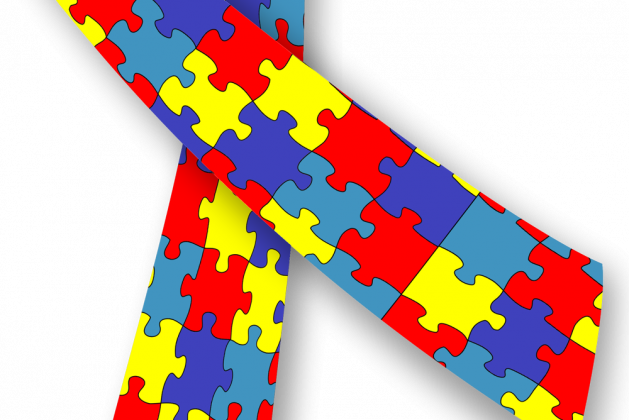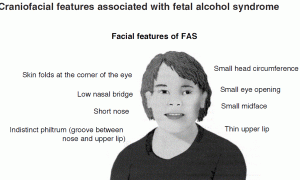
Autism is a very diverse and complex condition of the brain that generally causes varying degrees of under-development in certain areas of the brain. This can cause many psychological and physiological problems, and specific symptoms are different in every patient – both in type and in severity.
Symptoms
Autism generally presents itself in children between ages two and three, and there are some common indicators:
1) Under-development of cognitive skills
2) Under-development of speech
3) A significant lack of social skills
4) Repetition of movements or actions
5) Obsessive behavior
6) Very limited focus
Unfortunately, in many instances these indicators are meaningless due to the age the condition begins to present itself – many of the behaviors listed can also be considered normal for a child of that age. Each case should be treated individually, and it is important to evaluate your child’s development against his or her contemporaries. A psychologist or psychiatrist can be very helpful in assessing meaningful symptoms. If your child is displaying any irregular behavior – commonly associated with autism or not – use of a mental health professional can be critical to their future. It can be much easier to treat and help curb symptoms of autism when identified early.
Causes
The most recent figures indicate that one in every eighty-eight children are born with some form of autism in America. In addition, a staggering one out of every fifty-four boys are estimated to suffer from the condition. While it is not exactly clear what the direct cause of autism is, significant gains have been made to isolate the cause of this potentially debilitating brain disorder.
After realizing that there was no one specific cause for autism – which accounts for varying degrees of symptoms – the latest Diagnostic manual takes all forms of the disorder and classifies them under the broad diagnosis of Autism Spectrum Disorder, or ASD. Patients formerly diagnosed with Asperger’s Syndrome, Pervasive Developmental Disorder, Rett Syndrome, or Childhood Disintegrative Disorder are now universally classified under the name ASD, with a DSM-V code of 299.00.
We have now been able to at least determine a starting point for the cause of autism of any kind. The most recent science points to various mutations to a whole host of different genes as the primary cause of ASD. In other words, autism is a disorder you must be born with.
Genetic mutations do not necessarily mean the disorder is imminent however – there are a number of environmental and social risk factors that also play a role in the development of ASD, that include, but are not limited to:
1) Age of the parents at conception
2) Illnesses during pregnancy
3) Premature deliveries and low birth weight
4) Oxygen deprivation to the baby
5) Exposure to chemicals during pregnancy
Very often it is a combination of gene mutations as well as risk factors that determine the prevalence and severity of ASD in a child, making symptoms vary greatly.
Diagnosis
While there is no blood test to determine if someone is autistic or not, there are other indicators used to make an accurate diagnosis. Generally these criteria are evaluated by the social challenges, communication issues, as well as repetitive behaviors a child shows. A child showing a lack of emotion from a young age, a significantly decreased lack of interest in others, as well as an inability to read body language and other social cues are very characteristic social behaviors exhibited by children with ASD.
As far as communication is concerned, a delay in the ability to make any verbal as well as nonverbal communication is a very common symptom of a child with ASD. Early attempts at speech are generally exhibited later than usual, resulting in a very common deficiency in this area. Extensive speech therapy is sometimes needed to develop coherent sentences. Often there is a disconnect in people with ASD between speech and body language that may accompany it.
Repetitive or compulsive behavior can be a very large indication, as well as a symptom, of ASD. The “rocking” back and forth of autistic children is common, as is hand-flapping and a need to constantly arrange objects. Compulsions can take the form of Obsessive Compulsive Disorder-like tendencies on one end of the spectrum, to gaining advanced knowledge about specific things on the other. In many cases, these patients need to maintain structure.
In addition to meeting the diagnostic criteria for ASD, there are other ways to properly evaluate a child suspected of suffering from ASD. The Modified Checklist for Autism in Toddlers (or M-CHAT) is a very standard guide for both parents and medical professionals to properly evaluate a child for ASD of any severity.
Treatment
Unfortunately, there is no cure for any form of autism. Frequently, once a child begins to decline, the severity only becomes more apparent with age. Speech, occupational and psychological therapy is often used to help patients function to their potential. Psychotherapy is particularly important in the social aspect – it helps sufferers better assimilate. Relationships developed with therapists can be integral for progression.
Commonly prescribed medications include:
1) Antipsychotics
2) SSRI or SNRI anti-depressants
3) ADD/ADHD psychostimulants
4) Benzodiazapines
There is no medication specifically used to treat autism – only many used to alleviate symptoms associated with the disorder. While autism can be a very debilitating life-long struggle, using the correct combination of medical professionals, a solid home life and medication, many sufferers can learn to live long and fulfilling lives – regardless of disability.
In fact, many diagnosed with ASD have an increased ability to recall specific details, and very often exhibit incredible artistic, musical and mathematics skills. Frequently, these tendencies are fueled by obsessive tendencies, but with the assistance of therapists and other medical professionals can be properly harnessed and directed.
Autism presents itself in many different ways with a multitude of symptoms than can impair the development of cognition, speech, and social growth – in addition to physical side effects such as repetition. When properly addressed and maintained, ASD patients can reach their full potential.
Additional Resources
The Web is filled with information about autism. Following are a few suggestions to get you started.
1) Autism Research Institute
2) Autism Speaks
3) The Autism Society
4) Autism Fact Sheet – National Institute of Neurological Disorders and Stroke (See the bottom of the page for even more resources):
Have you or a loved one faced autism? Share your experience and tips with us in the comments.




Leave a comment
You must login or register to add a new comment.